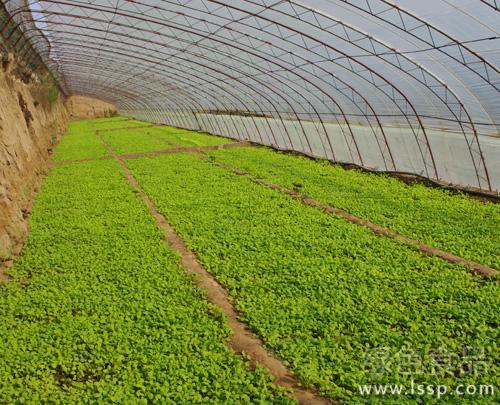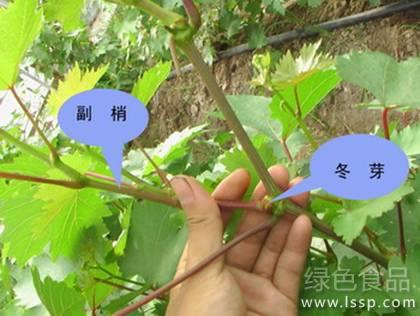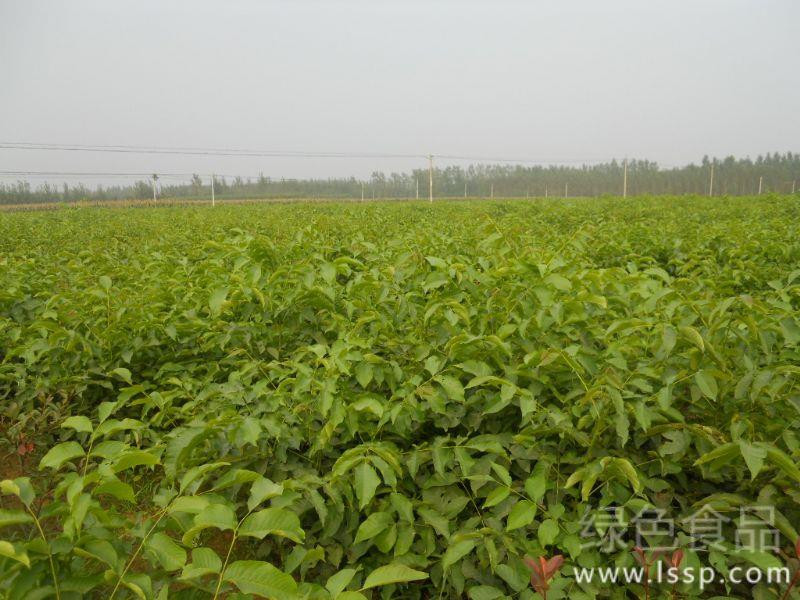Causes and improvement methods of soil deterioration in vegetable field

Vegetable plot
With the extension of vegetable planting time, especially in some old vegetable bases, there are different degrees of soil deterioration in vegetable fields, such as soil consolidation, lack of trace elements, accumulation of bacteria and so on, which must attract the attention of vegetable farmers.
1. Causes of soil deterioration in vegetable fields
1. Soil consolidation. The application of a large number of inorganic chemical fertilizers and ignoring the supplement of organic fertilizers resulted in the lack of organic matter in the soil, poor air permeability, decreased activity of aerobic microorganisms, slow soil maturity and hardening, which hindered the normal extension of the root system of vegetable plants; at the same time, excessive application of chlorine-containing chemical fertilizer produced salt ion toxicity and inhibited the growth and development of vegetables.
2. Lack of trace elements. Vegetable fields are often continuous cropping for many years, without adding organic fertilizer for many years, and most vegetable farmers do not have the habit of supplementary application of micro-fertilizer. as a result, trace elements such as zinc, boron, molybdenum, copper and manganese in the soil are reduced day by day, affecting the healthy growth of vegetables.
3. Accumulation of soil diseases and insect pests. Large area planting, single variety continuous cropping and unscientific management will cause pathogens and pests in the soil to accumulate and increase year by year, which will aggravate the harm to vegetables, often cause root rot, and even wither the whole plant.
4. The active soil layer becomes thinner. Continuous stubble intercropping, artificial ploughing, flood irrigation, no mechanical deep ploughing, no deep ploughing, these tillage methods will make the active soil layer thinner and shallower, making it difficult for the roots to spread and deepen in the active soil layer. When transplanting with too large soil balls, it is easier to make the living soil layer thinner and barren.
5. Soil pollution. Soil pollution is caused by sewage irrigation, acid rain, excessive application of chemical fertilizers and pesticides, herbicides, and even dumping solid waste into the soil. Soil pollution has the characteristics of accumulation, lag, concealment, irreversibility and difficult to control. After the soil is polluted, it will eventually lead to the overall degradation of the soil.
II. Soil improvement measures in vegetable field
1. Increase the application of organic fertilizer. Increasing the application of organic fertilizer to return the litter to the soil, through the comprehensive action of soil physical, chemical and biological factors, will form organic colloid humus, make the soil loose and fertile, and improve the soil aggregate structure and physical and chemical properties. It can not only improve soil air permeability and water and fertilizer conservation capacity, but also improve soil environmental capacity and self-purification capacity, promote vegetable root development and enhance resistance.
2. Supplement micro-fertilizer. As vegetables are high-yield crops, with the outward transportation of commercial vegetables, a lot of trace elements have been taken away from the vegetable field. Trace element fertilizer can be used not only as base fertilizer but also as extra-root topdressing to supplement the deficiency of trace elements in vegetable soil, such as zinc sulfate, borax, ammonium molybdate, copper sulfate and manganese sulfate as base fertilizer, or foliar fertilizer during the growing period, it can alleviate the deficiency of trace elements such as zinc, boron, molybdenum, copper and manganese.
3. Crop rotation. As different kinds of vegetables absorb different soil nutrients, the same vegetable field should not plant a single variety of vegetables year after year, but can often carry out multiple crop rotation, mixed three-dimensional planting as far as possible to maintain biodiversity. The implementation of crop rotation can make full use of soil fertility, reduce the occurrence of diseases and insect pests, optimize the soil environment and reduce the toxic effect of toxins.
4. Dig deep into the land. The cultivation of vegetables should be carried out by deep ploughing and turning the soil during the planting interval. If intercropping cannot be ploughed with ploughshare, hoes or shovels should also be used to dig deep into the soil, and try to thicken the living soil layer of the vegetable field. After each application of base fertilizer, it is necessary to turn more than 30 cm deep and fully stir, so as to increase the exchange between the soil layers and enhance the ability of the soil to store water and preserve soil moisture.
5. Appropriate fallow. After planting vegetable soil for many years, we can seize the opportunity properly in order to make it reasonable for leisure. For example, the open-air vegetable field can use winter leisure to deeply turn the soil to dry, freeze in winter or plant green manure; the greenhouse vegetable field can be irrigated and covered with plastic film during summer leisure, these measures can effectively eliminate the source of diseases and insects and promote the soil to restore fertility.
6. Bioremediation. Under the premise of strict control of pollutant discharge and rational application of pesticides and chemical fertilizers, bioremediation is mainly used to treat the contaminated soil. Earthworms can improve the self-purification ability of soil and treat solid waste. Actively promoting the use of microbial agents to degrade pesticide pollution can also reduce pesticide residues.
- Prev

A brief Summary of the Utilization and treatment Technology of Grape Auxiliary shoot
A brief Summary of the Utilization and treatment Technology of Grape Auxiliary shoot
- Next

Seedling Propagation techniques of Walnut seedlings by Direct sowing
Seedling Propagation techniques of Walnut seedlings by Direct sowing
Related
- Fuxing push coffee new agricultural production and marketing class: lack of small-scale processing plants
- Jujube rice field leisure farm deep ploughing Yilan for five years to create a space for organic food and play
- Nongyu Farm-A trial of organic papaya for brave women with advanced technology
- Four points for attention in the prevention and control of diseases and insect pests of edible fungi
- How to add nutrient solution to Edible Fungi
- Is there any good way to control edible fungus mites?
- Open Inoculation Technology of Edible Fungi
- Is there any clever way to use fertilizer for edible fungus in winter?
- What agents are used to kill the pathogens of edible fungi in the mushroom shed?
- Rapid drying of Edible Fungi

